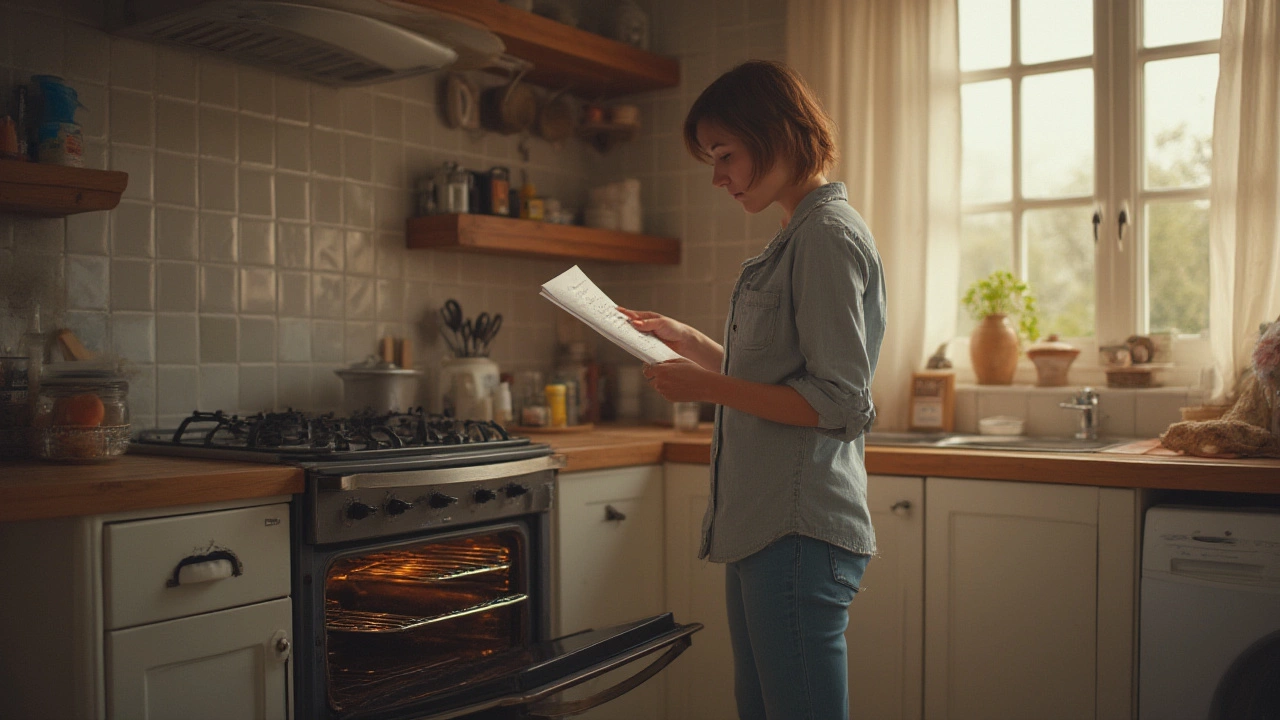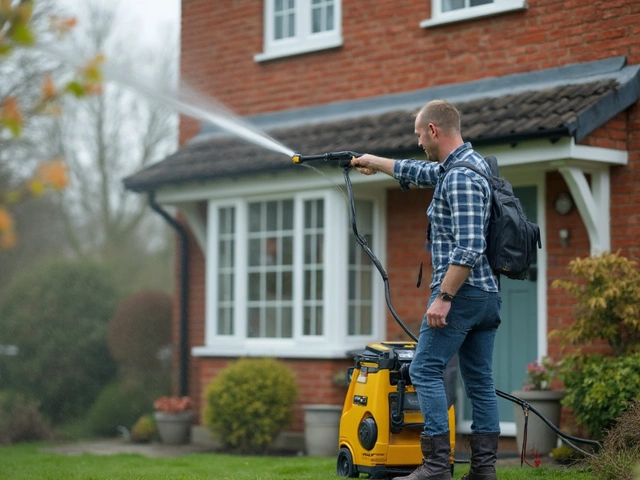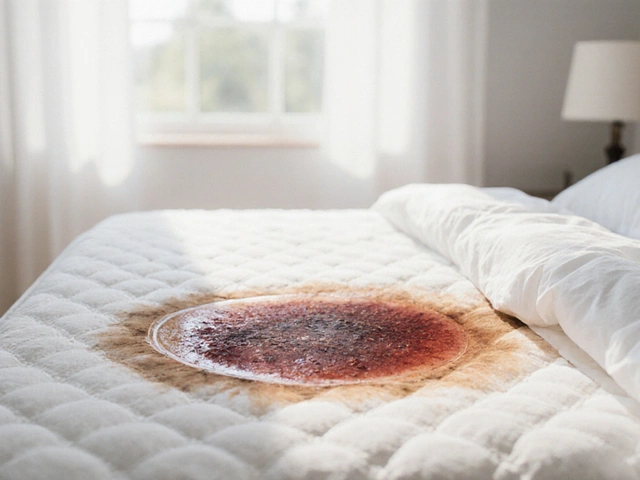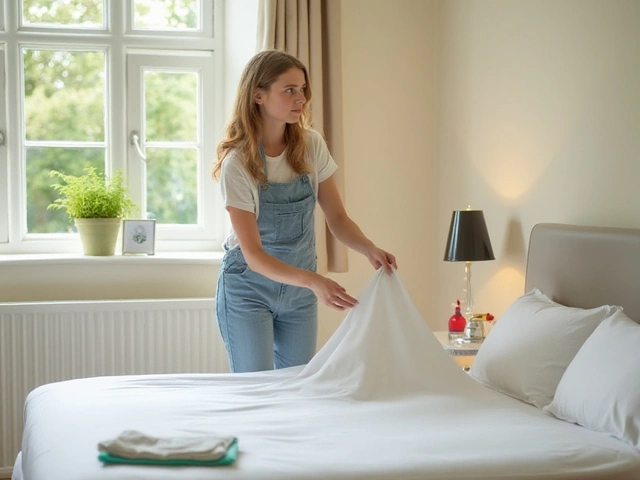You open your oven, peek inside—and bam, the walls are crusted with black, sticky grime. You’ve tried scrubbing in the past, but that baked-on muck just laughs at your feeble efforts. Most folks aren’t sure if it’s worth the hassle, but let’s be real: nobody’s keen to cook their next pizza in last year’s lasagne splatter. So, what actually works to get rid of black baked-on grease? Spoiler alert: it’s not all about brute force. Some smart tricks, the right products, and a few kitchen staples can make your oven look almost brand new (and yes, you might even skip the toxic fumes!).
Understanding What Causes Stubborn Oven Grease
Grease in your oven isn’t just splashes of oil. When food spills, fat drips, or cheesy stuff bubbles over, it hits oven walls and racks, and the high heat bakes it into a rock-hard crust. Over time, these spills carbonise, turning from golden brown to jet black. It’s not just a cosmetic issue—baked-on grease can actually change the taste of your food, causing smoky smells and sometimes, setting off the smoke alarm for extra drama.
Here’s the kicker: domestic ovens run between 180°C (for gentle bakes) up to 260°C for pizza and roasts. At those temps, organic matter breaks down, gets carbonised, and sticks harder with every cycle. Cleaning right after a spill helps, but who honestly wants to wipe the oven while the roast is still hot? Next thing you know, a quick dinner has left a stubborn, tar-like coating you can’t just wipe away.
Ever noticed the ‘self-cleaning’ cycle on some fancy models? It heats up to a scorching 500°C, turning all that mess to ash. Trouble is, many older ovens don’t offer this option, and some folks worry about fumes or power costs. Most Brits still deal with their oven's mess the old-fashioned way. But even if you’ve left the grease to build up for months, science (and elbow grease) can help break it down.
The Cleaning Arsenal: Products That Actually Work
If you wander down the cleaning aisle at any UK supermarket, you’ll see rows of sprays boasting “powerful oven cleaning.” But which ones work—and which ones are just overpriced soapy water? There’s a bit of chemistry behind the magic. Ordinary dish soap is too mild for seriously baked-on black grease. For that, you want either a caustic cleaner (usually containing sodium hydroxide) or a natural abrasive solution.
- Dedicated Oven Cleaners: Look for products like Oven Pride or Mr Muscle, which contain strong bases that break down burned fat and carbon. Always read the safety instructions—these are potent and can irritate skin and eyes.
- Baking Soda and Vinegar: Completely safe for most oven interiors (except aluminium or delicate finishes). Mix into a paste, spread on stains, leave for several hours (or overnight), and wipe away with a damp cloth.
- Ammonia: Not for the faint-hearted, but very effective. Place a bowl of ammonia in a closed, cold oven overnight. Its fumes loosen black deposits, but the smell isn’t for everyone.
- Steam and Heat: Fill an oven-safe dish with hot water, set your oven to a low temp, and close it up for 30 mins. The steam helps soften grime, making scrubbing easier the next day.
It’s worth mentioning: never mix chemical cleaners together (for example, bleach and ammonia), as this produces toxic fumes. Stick with a method and rinse thoroughly afterwards. Use gloves and plenty of fresh air.
Step-by-Step: Getting Rid of Black Baked-On Grease
Before you panic at the thought of scraping your knuckles raw, take a deep breath. You don’t need special tools—just a plan, some patience, and maybe your favourite playlist.
- Prepare the oven: Make sure it’s off and cool. Remove racks and trays, soaking them in hot soapy water or a baking soda bath.
- Apply your cleaner of choice: For commercial cleaners, spray evenly on blackened areas (avoid heating elements). For a homemade paste, slather thickly on all problem spots.
- Let it soak in: The longer, the better. Most products advise at least 30 minutes; overnight works well for natural solutions.
- Scrub gently: Use a non-scratch scourer, old toothbrush, or dedicated plastic scraper. Avoid anything metal, which can chip or scratch the enamel.
- Wipe down: Use a clean, damp cloth to remove all residue and cleaner. Stubborn spots? Reapply your chosen cleaner and repeat.
- Clean racks and trays: By now, they should scrub up fairly easily. Rinse well and dry before putting them back.
- Double-check seals and glass: Oven doors are magnets for grease. Most come apart for easy cleaning (check your manual first).
Here’s a quick reference table showing different cleaning methods and how well they work for stubborn black grease:
| Method | Effectiveness | Smell | Time Needed | Notes |
|---|---|---|---|---|
| Oven Cleaner Spray | High | Strong | 30-90 mins | Best for heavy build-up. Wear gloves! |
| Baking Soda + Vinegar | Medium | Mild | 6-12 hours | Great for routine cleaning or light stains |
| Ammonia | High | Pungent | Overnight | Very effective, use carefully with ventilation |
| Steam Clean | Low-Medium | Neutral | 30-60 mins | Good prep; not enough for old grease alone |
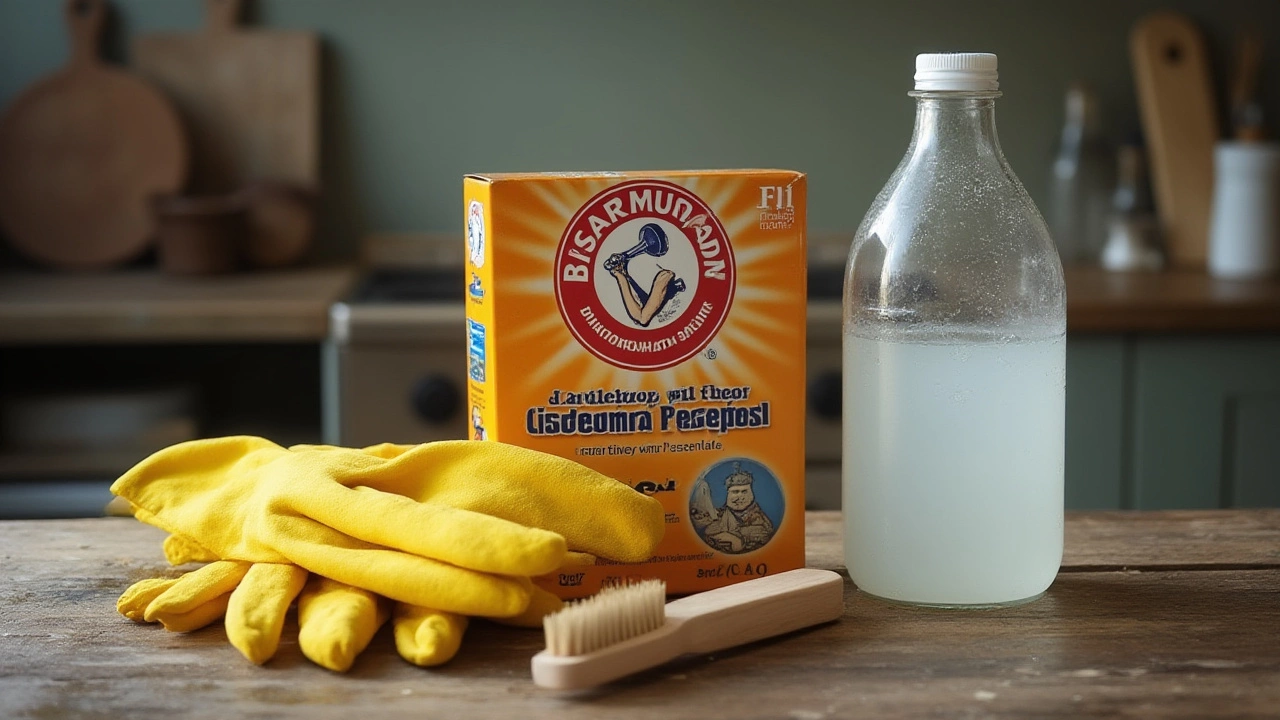
Underrated Tips and Tricks From Real Cleaners
Pro oven cleaners have a few secrets up their sleeves, and none involve impossible chemicals or ultra-expensive gadgets. One top tip from a Bath-based cleaner (who swears by her results for over a decade): always work from the top down. This stops gunk dribbling on places you’ve already scrubbed clean. Another clever hack? Cut old credit cards into shapes for scraping off stubborn bits—they’re flexible, don’t scratch, and can be tossed after heavy use.
Got a build-up on the oven window? If the manufacturer says it’s OK, you can carefully unscrew the glass for soaking. While you’re there, don’t ignore the hinges and gaskets—grease loves to hide in corners. Wipe excess cleaner away so it doesn’t get trapped when you close the door (nothing like marinating your next roast in leftover chemicals).
As for timing, most folks clean their oven only when it starts to smell or smoke. The reality: a quick wipe-down every couple of weeks, before gunk hardens, makes deep cleans way easier. If you’re really not a fan of chemicals, citrus peels boiled in water produce a mild acid that can help on recent spills.
Here are some common mistakes to steer clear of:
- Too much water: Don't flood your oven—especially with electric models. Water and electrics don’t mix.
- Leaving cleaner residue: Rinse or wipe thoroughly, or you’ll taste it in your next dish.
- Ignoring racks: Soaking first saves loads of scrubbing later.
- Using metal scourers: A shiny oven isn’t worth a scratched finish.
Keeping Your Oven Cleaner—For Longer
After you’ve battled the black grease, you’ll want those shiny results to last. While every oven gets dirty eventually, a few lousy habits are the usual culprits—think overloaded dishes, overfilling trays, or, my personal nemesis, pizza cheese dripping directly onto the heating element. Invest in a non-stick oven liner (the reusable silicone ones are grand). Pop one on the bottom shelf to catch sticky overflow—it’s way easier to rinse a liner than chip away at solid carbon.
If you’re constantly reheating oily foods, even covering them with foil or lids will catch splatter. Wild fact: according to a survey from a major UK kitchen retailer, people who wipe spills the same day save an average of 45 minutes when they do a full oven clean. Just an old sponge, a bit of soapy water, and a two-minute wipe can stop nightmare build-up.
Don’t forget about ventilation. Let your oven cool with the door open every now and then (out of reach of kids and pets, obviously) to air out any lingering moisture. Less trapped steam means less fat clinging to internal walls. Finally, make a cleaning schedule—even if it’s only once every two months. Set a phone reminder; trust me, future you will thank you.
Ever wondered why professional kitchens rarely have filthy ovens? It’s not magic—it’s routine. Fast, regular maintenance beats one big, ugly clean every time. Sure, nobody loves the job, but it beats joking with the smoke alarm during Sunday roast.
Common Questions and Smart Solutions
If you’re wondering, “Is oven cleaner safe?”—don’t stress. These products are regulated in the UK (the Health and Safety Executive keeps watch), so you’re generally safe if you follow the instructions. Just never use oven cleaner on self-cleaning models, as their coating can react and break down. Homemade solutions—like a thick baking soda paste or white vinegar spray—are safe for almost all types, but don’t expect miracles on 10-year-old grime without some scrubbing.
Here’s what many folks ask:
- How often should I clean? – Ideally, every couple of months or after especially ‘explosive’ meals.
- Can I use a steam mop? – Only if your oven allows it. Moisture and electric parts don’t mix, so check the manual first.
- My cleaner’s not working—what now? – Reapply, leave longer, and try to heat-soak before scrubbing. Stubborn black burnt-on grease sometimes needs a few passes.
- Is it worth hiring a pro? – If your oven is ancient or you can’t tackle it yourself, yes. But with a little patience (and the right cleaner), most messes are manageable on your own.
Here’s the bottom line: black, baked-on grease isn’t invincible. Some science, smart timing, and practical tools can rescue even the dirtiest oven. Stick to a method that fits your time, your tolerance for fumes, and your commitment to regular upkeep. Future you (and your taste buds) will thank you for it.
